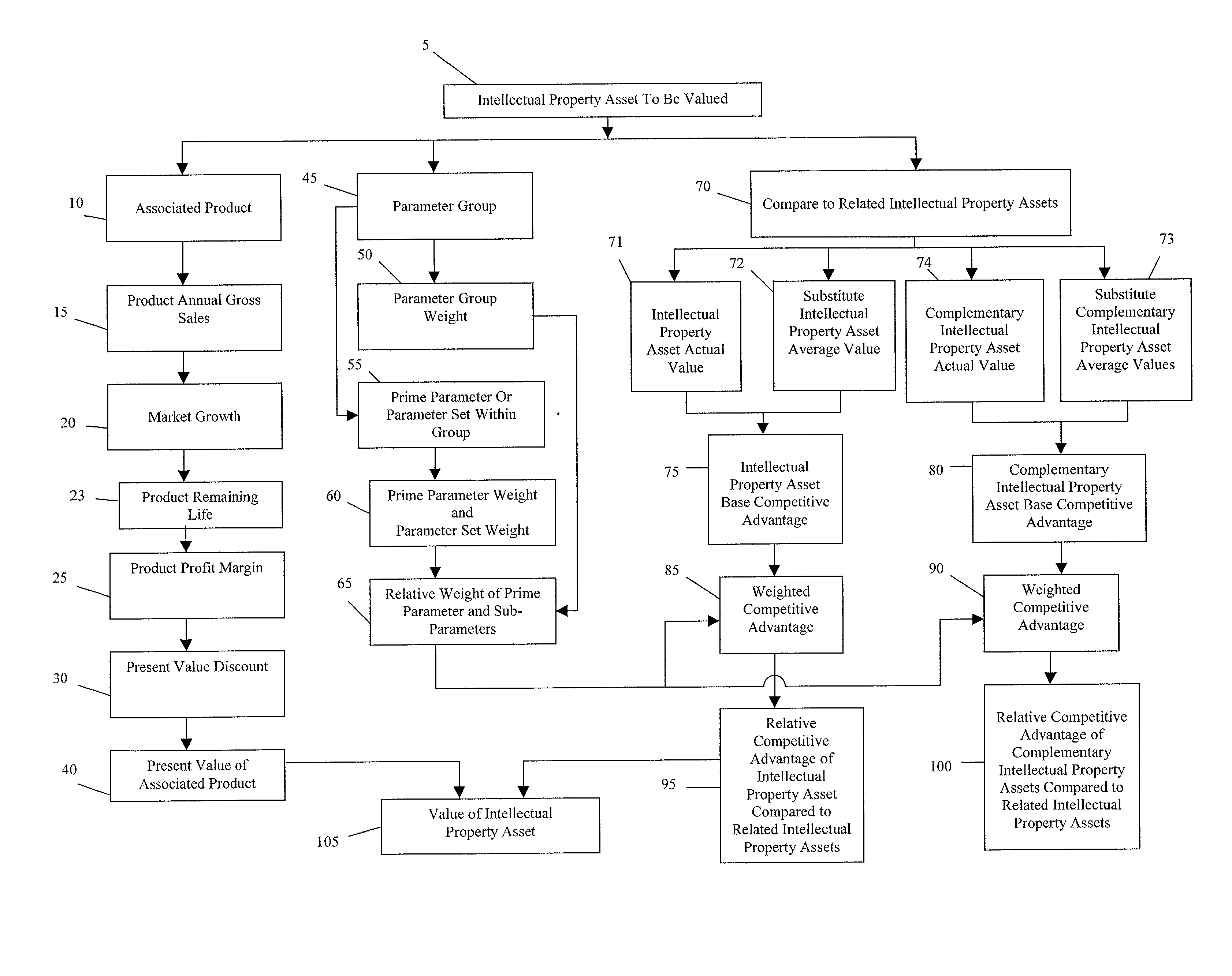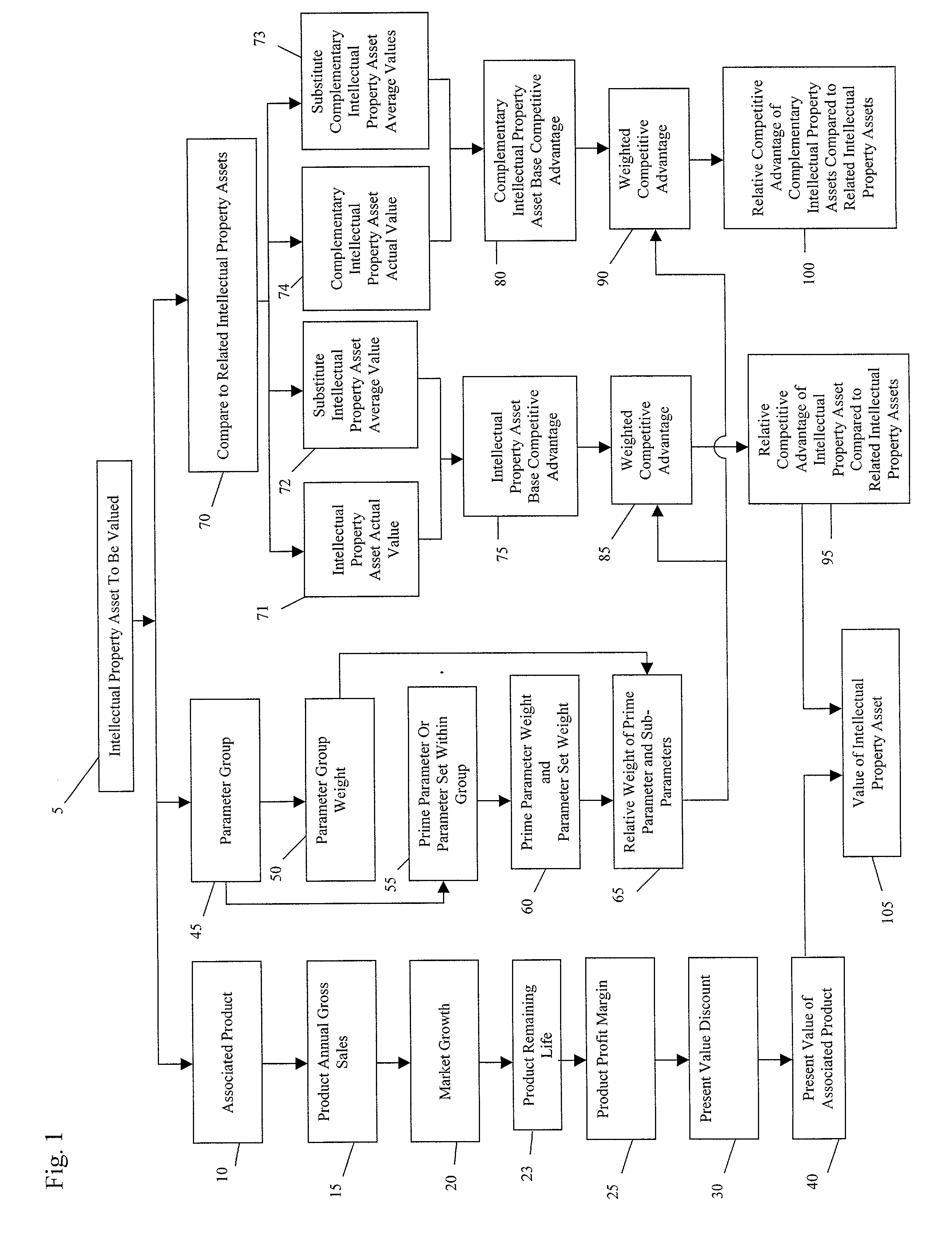Method for valuing intellectual property
a technology of intellectual property and valuation methods, applied in the field of valuation methods, can solve the problems of preventing the development, use and exchange of intellectual property assets, lack of adequate valuation methods for intellectual property assets, etc., and achieve the effect of great return on total investmen
- Summary
- Abstract
- Description
- Claims
- Application Information
AI Technical Summary
Benefits of technology
Problems solved by technology
Method used
Image
Examples
Embodiment Construction
[0037]The method of this invention comprises a series of associations and calculations that determine the value of an intellectual property asset. Specifically, this invention determines the value of an intellectual property asset as a function of the competitive advantage which it contributes to a tangible asset. Tangible assets (i.e. products, processes, and systems) are viewed as an aggregation of intangible intellectual property assets (i.e. patents, trade secrets, copyrights, trademarks, and business methods). Thus, an intellectual property asset is synonymous for an intangible asset and a tangible asset refers to a concrete product, process, or system. For convenience, the description will often refer to a product as an example of a tangible asset. As many of the associations and calculations are independent or form a basis for later calculations, they do not necessarily need to be performed in any particular order unless noted.
[0038]Referring now to the drawing Figures, where...
PUM
 Login to View More
Login to View More Abstract
Description
Claims
Application Information
 Login to View More
Login to View More - R&D
- Intellectual Property
- Life Sciences
- Materials
- Tech Scout
- Unparalleled Data Quality
- Higher Quality Content
- 60% Fewer Hallucinations
Browse by: Latest US Patents, China's latest patents, Technical Efficacy Thesaurus, Application Domain, Technology Topic, Popular Technical Reports.
© 2025 PatSnap. All rights reserved.Legal|Privacy policy|Modern Slavery Act Transparency Statement|Sitemap|About US| Contact US: help@patsnap.com



